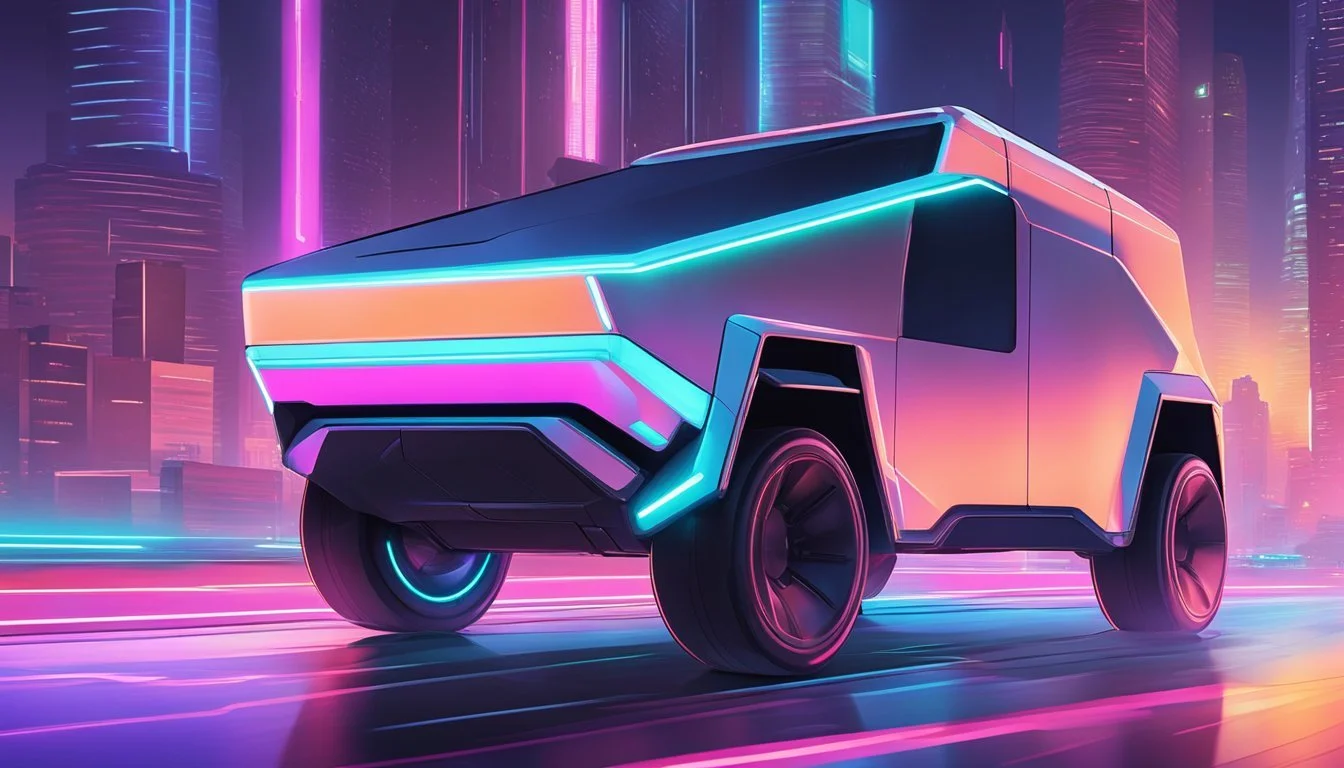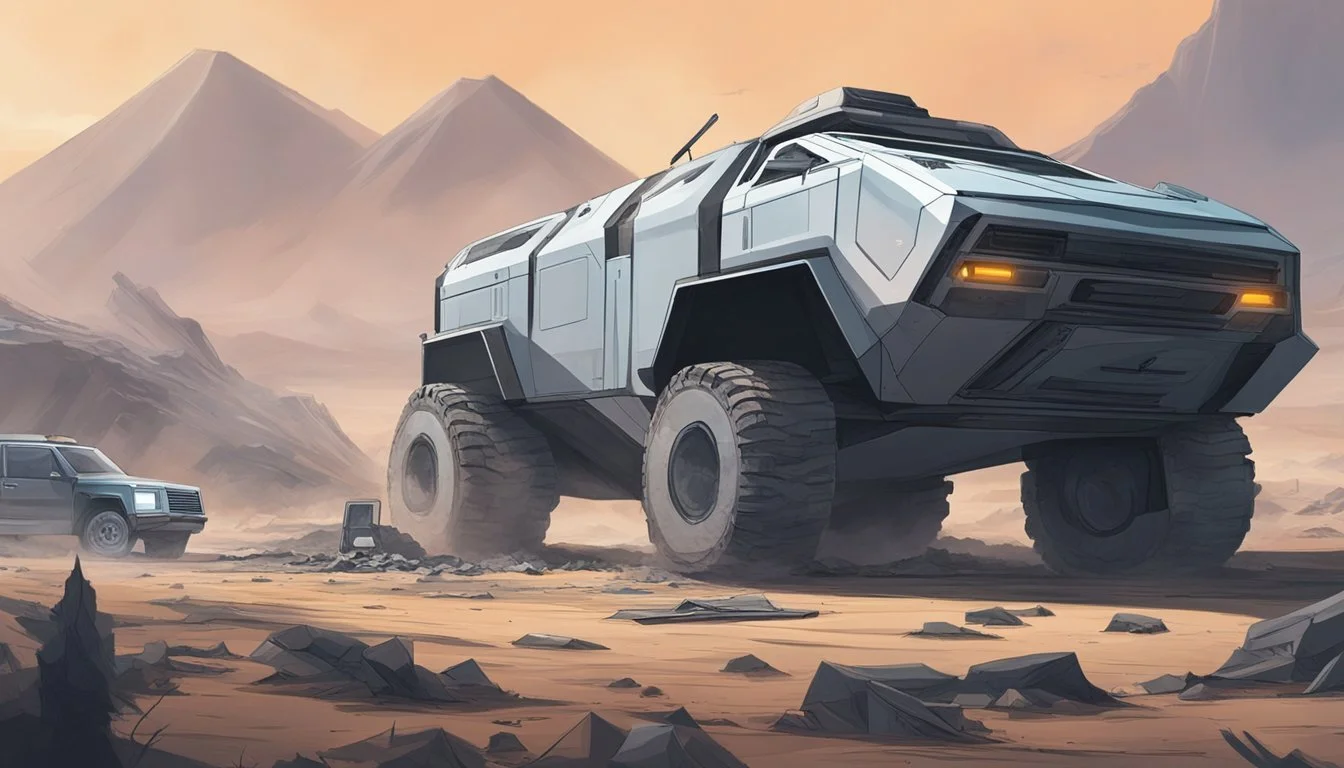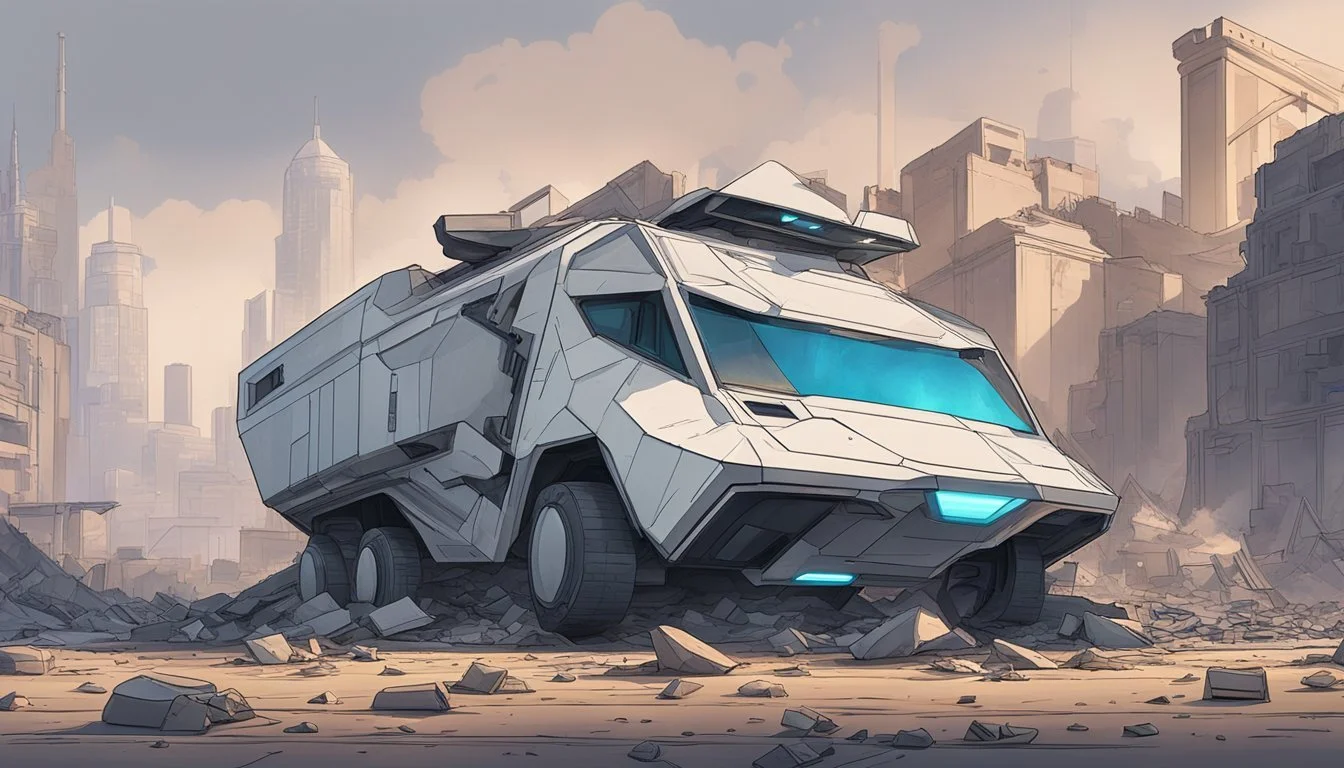Elon Musk Cybertruck Bombing: Shocking Explosion Raises Safety Concerns!
On January 1, 2025, a Tesla Cybertruck exploded outside the Trump International Hotel in Las Vegas, sparking widespread concern and speculation. The incident quickly drew attention from both the public and Tesla CEO Elon Musk.
Musk swiftly responded to the event, characterizing it as a failed terrorist attack. He stated that the perpetrators had chosen the "wrong vehicle," emphasizing the Cybertruck's robust design limited the explosion's impact. This response highlighted Tesla's confidence in their vehicle's safety features, even in extreme circumstances.
The explosion raised questions about the Cybertruck's safety and Tesla's reputation. However, Musk's immediate involvement and public statements aimed to reassure customers and stakeholders about the vehicle's integrity. The incident and its aftermath have become a focal point in discussions about electric vehicle safety and potential security risks.
Background on the Cybertruck
The Tesla Cybertruck represents a bold departure from traditional pickup truck design. It combines futuristic aesthetics with advanced electric vehicle technology, aiming to disrupt the automotive industry.
Elon Musk's Vision for the Cybertruck
Elon Musk envisioned the Cybertruck as a revolutionary vehicle. He sought to create a pickup that was not only electric but also highly durable and capable.
Musk emphasized the truck's "bulletproof" exterior and shatterproof windows. These features aimed to showcase the vehicle's toughness and resilience.
The CEO positioned the Cybertruck as a versatile machine, suitable for both work and recreation. Musk highlighted its towing capacity and acceleration, challenging conventional pickup truck capabilities.
Cybertruck Design and Features
The Cybertruck's angular, stainless steel body sets it apart visually. Its exoskeleton design provides strength and reduces manufacturing complexity.
Tesla equipped the vehicle with adaptive air suspension, allowing for adjustable ride height. This feature enhances off-road performance and improves aerodynamics at highway speeds.
The truck bed, dubbed the "vault," includes a built-in cover and various tie-down points. Tesla designed this area for versatility, accommodating diverse cargo needs.
Inside, the Cybertruck features a minimalist interior with a large central touchscreen. The seating arrangement accommodates up to six passengers, balancing utility with comfort.
Tesla's Position in the Electric Vehicle Market
Tesla has established itself as a leader in the electric vehicle (EV) market. The company's success with sedans and SUVs paved the way for its entry into the pickup truck segment.
The Cybertruck represents Tesla's attempt to capture a share of the lucrative truck market. This move challenges traditional automakers who dominate pickup sales.
Tesla's reputation for innovation and performance in EVs lends credibility to the Cybertruck. The company's existing charging infrastructure also provides an advantage for potential buyers.
The Cybertruck's unique design and capabilities aim to attract both traditional truck enthusiasts and tech-savvy consumers. This approach aligns with Tesla's strategy of expanding its customer base beyond early EV adopters.
The Incident Overview
On January 1, 2025, a Tesla Cybertruck exploded outside the Trump International Hotel in Las Vegas. This incident was followed by a related attack in New Orleans.
Las Vegas Incident Timeline
At approximately 8:30 PM local time, a Tesla Cybertruck detonated near the entrance of the Trump International Hotel in Las Vegas. The explosion caused significant damage to the hotel's facade and surrounding area. Authorities quickly responded to the scene.
Security footage revealed the vehicle arrived at the hotel minutes before the blast. The driver, later identified as a 37-year-old U.S. Army soldier, exited the Cybertruck and fled on foot.
Tesla CEO Elon Musk assisted investigators by providing video footage from Tesla charging stations, helping track the vehicle's route to Las Vegas. The Cybertruck had been rented through Turo several days prior to the incident.
New Orleans Related Attack
Hours after the Las Vegas explosion, a similar incident occurred in New Orleans. At 2:15 AM on January 2, another Tesla Cybertruck detonated outside a government building.
The New Orleans attack caused minor structural damage but no casualties. Authorities believe the two incidents are connected, citing similarities in the explosive devices used.
Investigators are examining potential links between the perpetrators. Both attacks utilized improvised explosive devices (IEDs) placed within Cybertrucks, suggesting a coordinated effort.
The FBI has taken lead on the investigation, working closely with local law enforcement in both cities. They are treating the incidents as potential acts of domestic terrorism.
Investigations and Findings
The Cybertruck explosion incident prompted a multi-faceted investigation involving law enforcement, Tesla's cooperation, and forensic analysis. Key findings emerged regarding the suspect, vehicle data, and explosive materials used.
Law Enforcement Response
Las Vegas Metropolitan Police Department swiftly responded to the explosion outside Trump International Hotel. They secured the area and launched an immediate investigation. Detectives reviewed surveillance footage and interviewed witnesses. The police worked closely with federal agencies due to the high-profile nature of the incident.
Investigators identified the suspect as Matthew Livelsberger within hours of the blast. They traced his movements prior to the event using hotel records and credit card transactions. The quick identification allowed law enforcement to focus their efforts and prevent potential follow-up incidents.
Matthew Livelsberger's Role
Matthew Livelsberger, a U.S. Army veteran from New Orleans, was identified as the primary suspect. His military background raised concerns about his potential expertise with explosives. Investigators discovered Livelsberger had rented the Cybertruck shortly before the incident.
Police searched Livelsberger's residence and uncovered evidence linking him to the explosion. His social media accounts and recent communications were analyzed for possible motives. The investigation revealed a history of mental health issues and growing anti-government sentiment.
Vehicle Telemetry Data Analysis
Tesla provided crucial assistance by sharing the Cybertruck's telemetry data with investigators. This data included the vehicle's location history, speed, and system status leading up to the explosion. Elon Musk confirmed on social media that all vehicle telemetry was normal at the time of the blast.
The data analysis helped reconstruct Livelsberger's movements and ruled out any vehicle malfunction as the cause. Investigators used this information to create a timeline of events and identify potential accomplices or additional locations of interest.
The Use of Firework Mortars
Forensic examination of the explosion site revealed the use of firework mortars as the primary explosive device. These commercial-grade fireworks were modified to increase their destructive potential. Investigators found remnants of the mortars mixed with the Cybertruck debris.
Livelsberger's purchase history showed recent acquisitions of fireworks from retailers in New Orleans. The investigation uncovered evidence of online research on modifying fireworks for maximum impact. This discovery helped prosecutors build a case for premeditated actions rather than a spontaneous event.
Safety and Security Measures
The Cybertruck bombing incident highlighted critical safety aspects of electric vehicles and sparked discussions on improving security measures. Tesla's response and subsequent actions aimed to address vulnerabilities and enhance protection for passengers and bystanders.
The Role of Camping Fuel in the Incident
Investigators determined that camping fuel played a significant part in the explosion. The suspect allegedly used this highly flammable substance to amplify the blast. Camping fuel's volatility and easy accessibility raised concerns about potential misuse in attacks.
Law enforcement agencies are now reviewing regulations on the sale and storage of camping fuel. Some retailers have implemented stricter purchase limits and age restrictions.
Vehicle Fire and Electric Vehicle Safety
The Cybertruck's response to the explosion demonstrated the robustness of Tesla's electric vehicle design. Unlike conventional fuel-powered cars, electric vehicles lack a large tank of flammable liquid, reducing fire risks.
Tesla's battery pack design includes multiple safety features:
Fireproof barriers between cells
Automatic power disconnection in case of a crash
Strategically placed vents to direct heat away from the passenger compartment
These measures helped contain the fire and prevent it from spreading to the battery pack, potentially averting a more severe incident.
Improvements to Tesla's Safety Standards
Following the bombing, Tesla announced plans to further enhance their vehicles' safety features. Key improvements include:
Reinforced body panels to better withstand explosions
Advanced sensors to detect unauthorized access or tampering
Integration with local emergency services for faster response times
Tesla is also developing an AI-powered threat detection system. This technology aims to identify potential security risks in real-time and alert authorities if necessary.
The company has pledged to share these safety innovations with other automakers, fostering industry-wide improvements in vehicle security.
Legal and Social Implications
The Cybertruck explosion incident has sparked debates about liability, security, and privacy. Key stakeholders face complex legal and ethical questions in its aftermath.
Turo's Liability and Policy Considerations
Turo, the car-sharing platform involved in the incident, faces scrutiny over its policies. The company may need to reevaluate its vehicle screening procedures and insurance coverage. Turo's terms of service and user agreements are under review to determine the extent of its responsibility.
Legal experts suggest Turo could face potential lawsuits from affected parties. The platform might implement stricter verification processes for users and vehicles to prevent future incidents. Turo's response and policy changes could set precedents for the sharing economy sector.
Public and Governmental Reactions
Public opinion on vehicle safety and terrorism prevention has shifted following the explosion. Government agencies, including the Department of Government Efficiency, are reassessing security protocols at high-profile locations.
Lawmakers are considering new regulations for advanced vehicle technologies. Some propose enhanced background checks for car-sharing services. Others advocate for improved explosive detection methods in public spaces.
Social media discussions reflect divided views on balancing security with personal freedoms. Public trust in emerging automotive technologies faces challenges, prompting calls for greater transparency from manufacturers.
Privacy Concerns Raised
The incident has reignited debates about privacy in the digital age. Investigators' use of car data and user information raises questions about data protection rights. Privacy advocates argue for stricter controls on data collection and sharing by tech companies and law enforcement.
Car manufacturers face pressure to clarify their data retention policies. Users demand more transparency about how their information is used and shared. Some experts propose new privacy laws specifically addressing connected vehicles and sharing platforms.
The balance between national security and individual privacy remains a contentious issue. Policymakers grapple with crafting regulations that protect citizens while enabling effective law enforcement.
Personal and Political Impacts
The Cybertruck explosion outside Trump International Hotel had far-reaching consequences for key individuals and institutions. It sparked reactions from the Trump family, raised questions about mental health, and put a spotlight on the intersection of technology and politics.
The Trump Family and the Trump International Hotel
The incident occurred near the Trump International Hotel in Las Vegas, thrusting the Trump brand into an unexpected controversy. The hotel faced immediate security concerns and potential reputational damage. Staff and guests were evacuated swiftly, causing disruption to operations.
The Trump Organization had to address public safety worries and reassure future visitors. The hotel implemented enhanced security measures in response. This event also reignited debates about the security of Trump-branded properties worldwide.
Response from Eric and Donald Trump
Eric Trump, executive vice president of the Trump Organization, issued a statement expressing sympathy for the victim and gratitude to first responders. He emphasized the hotel's commitment to guest safety.
Donald Trump commented on the incident via social media. He linked the event to broader political issues and criticized current administration policies. His remarks sparked debate about the politicization of the tragedy.
The Trump family's response became a focal point for media scrutiny and public discussion.
Mental Health Considerations
The apparent suicide of the Cybertruck driver raised critical questions about mental health awareness. Experts called for increased focus on suicide prevention and improved access to mental health resources.
The incident highlighted the complex relationship between technology, fame, and psychological well-being. Some speculated about the pressures faced by early adopters of high-profile technologies.
Mental health organizations used this event to promote dialogue about recognizing signs of distress and seeking help. The tragedy underscored the need for comprehensive mental health support systems in society.
Media Coverage and Public Perception
The Cybertruck explosion garnered widespread media attention and sparked intense public debate. News outlets provided varying accounts of the incident, while social media platforms became a battleground for conflicting narratives and opinions.
Associated Press Reporting
The Associated Press delivered factual coverage of the Cybertruck explosion outside the Trump Hotel in Las Vegas. Their reports focused on the key details: the date, location, and immediate aftermath of the incident. The AP highlighted that the explosion occurred on New Year's Day, coinciding with a separate terrorist attack in New Orleans that claimed 14 lives.
AP journalists interviewed eyewitnesses and local authorities to piece together the sequence of events. They noted the use of explosives and reported on any injuries resulting from the blast. The news agency also explored potential motives, including whether the act was considered terrorism by law enforcement.
The Role of Social Media
Social media platforms played a crucial role in shaping public perception of the Cybertruck explosion. Tesla CEO Elon Musk used X (formerly Twitter) to defend the vehicle's safety and criticize media coverage. He hinted at potential lawsuits against news outlets for their portrayal of the incident.
Supporters of the Cybertruck shared posts downplaying the severity of the explosion. Some even suggested it could serve as "good advertising" for the vehicle's durability. Critics, on the other hand, used social media to question Tesla's safety standards and Musk's response to the incident.
Fact-checkers and journalists worked to combat misinformation spreading across platforms. They emphasized the importance of relying on verified sources and official statements from law enforcement agencies.




